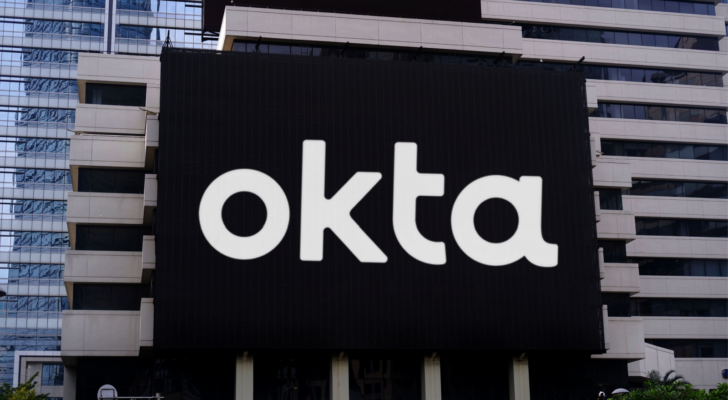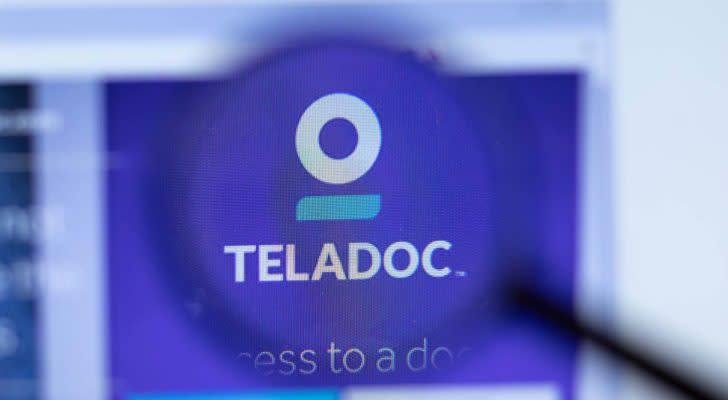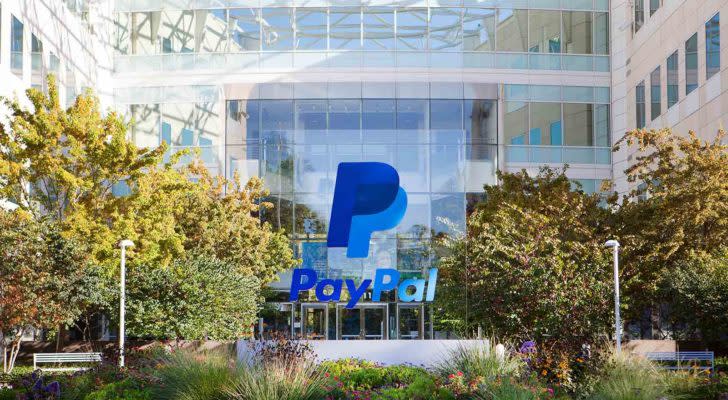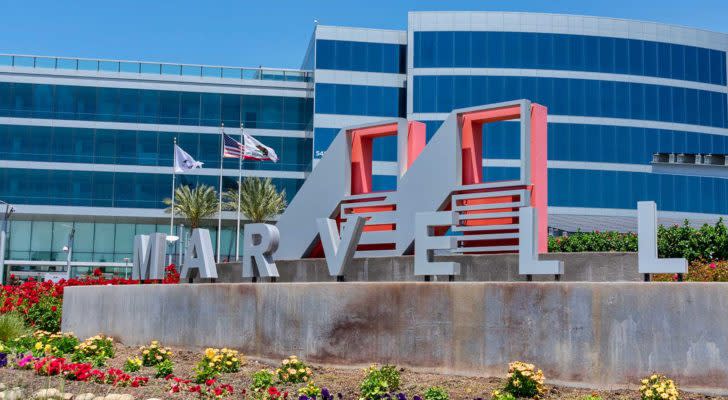Silicon Surge: 7 Tech Stocks Poised for a Bullish Comeback
Undeniably, unless some catastrophic black swan event materializes, 2023 will go down as the year of tech stocks to buy. Let’s not even start to argue the point. Just look at the technology-centric Nasdaq-100 index, which shot up almost 51% year-to-date as of this writing. Even more startling, nothing seems to be slowing this freight train.
So, if we’re basing the aforementioned benchmark as the baseline, any bullish tech investments that print a YTD performance of less than 51% is relatively undervalued. That said, it’s difficult to sort through the discount bin. Basically, if an innovation-oriented enterprise was truly compelling, it likely would have been heavily discussed by now.
Still, with thousands of publicly traded opportunities available, it’s practically impossible to give equal coverage to all. Some compelling tech stocks to buy are simply falling through the cracks. Below is a breakdown of underappreciated innovators on a potential comeback trail.
InvestorPlace - Stock Market News, Stock Advice & Trading Tips
Okta (OKTA)

Source: Poetra.RH / Shutterstock.com
What it is: An identity and access management company, Okta (NASDAQ:OKTA) provides cloud software that helps companies manage and secure user authentication into applications. Additionally, the platform allows developers to build identity controls. Since the beginning of the year, OKTA gained about 11%, which is lowly compared to popular tech stocks to buy.
Relevance: Fundamentally, Okta benefits from a large and burgeoning addressable market. According to Grand View Research, the global identity and access management market reached a valuation of $15.93 billion last year. Experts project that the segment will expand at a compound annual growth rate (CAGR) of 12.6% from 2023 to 2030. At the culmination point, the industry should generate revenue of $41.52 billion.
Pros: Analysts rate OKTA a consensus moderate buy with a maximum price target of $110. Financially, the company posts a three-year revenue growth rate of 33%.
Cons: Overall, the average analyst price target is very modest. Also, investors will be paying a pricey premium against trailing-year sales.
Corsair Gaming (CRSR)

Source: Tada Images/ShutterStock.com
What it is: Based in Milpitas, California, Corsair Gaming (NASDAQ:CRSR) is a computer peripherals and hardware company. Per its public profile, Corsair designs and sells a range of computer products, including high-speed DRAM modules, ATX power supplies, and processor and case cooling systems. Since the start of the year, CRSR only gained less than 3% of equity value.
Relevance: Despite its underperformance, CRSR could be one of the more compelling bullish tech investments. According to Grand View Research, the global video game market reached a valuation of $217.06 billion last year. Further, experts project that from 2023 to 2030, the sector will expand at a CAGR of 13.4%. At the culmination point, we’re talking annual revenue of $583.69 billion. Plus, with gaming become a “true” industry, peripheral demand should soar.
Pros: Analysts peg CRSR as a consensus moderate buy with a $17.17 average price target, implying about 22% growth. Also, CRSR trades at only 0.97x trailing-year sales, below the sector median of 1.46x.
Cons: Overall, the analyst assessment is somewhat pensive at three buys and three holds. Also, revenue growth slowed in 2022, presenting some demand questions.
Teladoc (TDOC)

Source: Postmodern Studio / Shutterstock.com
What it is: A multinational telemedicine and virtual healthcare enterprise, Teladoc (NYSE:TDOC) garnered intense popularity during the Covid-19 crisis. Obviously, with the mysterious SARS-CoV-2 virus running around, contactless services were everything. Since then, TDOC shed a considerable amount of its acute relevance. Since the January opener, TDOC slipped more than 15%.
Relevance: From a cynical level, if we suffer another pandemic, Teladoc may suddenly emerge as a relevant healthcare platform. However, experts still see strong growth in the arena irrespective of acute catalysts. Per Grand View Research, the global telehealth market will reach a valuation of $101.2 billion at the end of this year. By 2030, sector revenue could jump to $455.3 billion. That represents a CAGR of 24.3%.
Pros: Despite near-term fading relevance in the post-pandemic cycle, analysts still rate shares as one of the tech stocks to buy. Further, the average price target lands at $23.44, implying 23% upside.
Cons: Unfortunately, the company suffers from significant financial worries, including a distressed Altman Z-Score. Thus, it’s not a 100% clear-cut case for bullish tech investments.
PayPal (PYPL)

Source: JHVEPhoto / Shutterstock.com
What it is: A multinational financial technology (fintech) company, PayPal (NASDAQ:PYPL) earned its bread and butter through operating an online payments system. A few years ago, the company also offered its buy now, pay later (BNPL) platform called Pay in 4. This service allows customers to split their purchases into four equal payments with no interest or fees.
Relevance: Fundamentally, PayPal ranks among the top tech stocks thanks to broader consumer behavioral shifts. Specifically, young people expect easy digital payment solutions and various service options. It goes without saying that not giving customers what they want is a stupid business decision. Further, with digitalization becoming the norm throughout social transactional paradigms, payment service enterprises have a massive opportunity. Therefore, PayPal can leverage its massive brand trust component.
Pros: Currently, analysts peg PYPL a consensus moderate buy with an average price target of $73.13, implying 24% growth. It’s worth pointing out that PayPal features a three-year revenue growth rate of 16.7%, beating out the sector median 3.7%.
Cons: Primarily, huge skepticism surrounds PYPL because it’s down heavily from its 2021 peak market price. Therefore, it’s a high-risk, high-reward example among bullish tech investments.
ZoomInfo Technologies (ZI)

Source: II.studio / Shutterstock.com
What it is: A software and data company, ZoomInfo Technologies (NASDAQ:ZI) provides data for companies and business individuals. Per its public profile, its main product is a commercial search engine, specializing in contact and business information. Put another way, ZoomInfo offers a sales intelligence platform that allows its enterprise-level clients to identify and connect with potential customers.
Relevance: At first glance, an entity like ZoomInfo might seem problematic due to the troubled economic environment. After all, many blue chips are looking at ways to cut costs, including unfortunately mass layoffs. However, it’s also true that during a sentiment-deflated environment, companies need to fight for whatever customer volume they can get. So, it’s possible that ZI could enjoy a relevance bump, making it one of the tech stocks to consider.
Pros: Analysts seem confident in the northbound narrative of ZoomInfo, rating shares a consensus moderate buy. Also, the average price target lands at $19.93, implying almost 26% upside potential. It also sports a discounted (on paper) forward earnings multiple of 16.24x.
Cons: On the other hand, there’s a huge question about any forward implications for ZoomInfo. Since the January opener, ZI stock fell a staggering 46%.
Marvell (MRVL)

Source: Michael Vi / Shutterstock.com
What it is: Headquartered in Wilmington, Delaware, Marvell (NASDAQ:MRVL) develops and produces semiconductors and related technologies. Specifically, the company focuses on chips for various compelling applications, including data centers, networking and automotive solutions. While it’s not a top performer among tech stocks, it did soar nearly 51% since the January opener.
Relevance: Primarily, Marvell benefits from multiple avenues of demand-feeding opportunities. For example, just look at one aspect of its business, semiconductors for data centers. According to Allied Market Research, the underlying global arena reached a valuation of $187.35 billion in 2020. By 2030, the sector could hit $517.17 billion. That comes out to a CAGR of 10.5% from 2021 to 2030. Add in the other sectors and you’re probably talking gangbusters growth over the long run.
Pros: Unsurprisingly, analysts peg MRLV a consensus strong buy and it would have been unanimous were it not for a single hold rating. Further, the average price target stands at $68.50, implying over 26% growth.
Cons: While MRVL makes a great case for bullish tech investments, it’s also pricey. Currently, shares trade at 8.44x trailing revenue, well above the sector median of 2.88x.
Fiverr (FVRR)

Source: Temitiman / Shutterstock.com
What it is: Based in Israel, Fiverr (NYSE:FVRR) offers an online marketplace for freelance services. Per its public profile, Fiverr connects freelancers to people or businesses looking to hire workers, typically for short-term projects. Naturally, Fiverr represents a key component of the burgeoning gig economy. However, the market is skeptical, with shares down more than 7% since the beginning of the year.
Relevance: While FVRR might not immediately strike investors as one of the tech stocks to buy, the potential of the gig economy is unignorable. According to Business Research Insights, the global arena reached a market valuation of $355 billion in 2021. Experts project that by 2031, the sector will expand at a CAGR of 16.18%. That translates to a valuation of over $1.86 trillion at the culmination point. So, patience could be a virtue.
Pros: Analysts seem to believe in the long-term narrative, rating shares a consensus moderate buy. Further, the average price target clocks in at $35.56, implying 34% upside potential.
Cons: While FVRR trades at forward earnings multiple of 12.82x (implying a discount), Gurufocus warns it could be a value trap. It’s barely posting profits in recent quarters so reasonable skepticism about forward earnings valuations exists.
On the date of publication, Josh Enomoto did not have (either directly or indirectly) any positions in the securities mentioned in this article. The opinions expressed in this article are those of the writer, subject to the InvestorPlace.com Publishing Guidelines.
A former senior business analyst for Sony Electronics, Josh Enomoto has helped broker major contracts with Fortune Global 500 companies. Over the past several years, he has delivered unique, critical insights for the investment markets, as well as various other industries including legal, construction management, and healthcare. Tweet him at @EnomotoMedia.
More From InvestorPlace
The #1 AI Investment Might Be This Company You’ve Never Heard Of
Musk’s “Project Omega” May Be Set to Mint New Millionaires. Here’s How to Get In.
The Rich Use This Income Secret (NOT Dividends) Far More Than Regular Investors
The post Silicon Surge: 7 Tech Stocks Poised for a Bullish Comeback appeared first on InvestorPlace.
